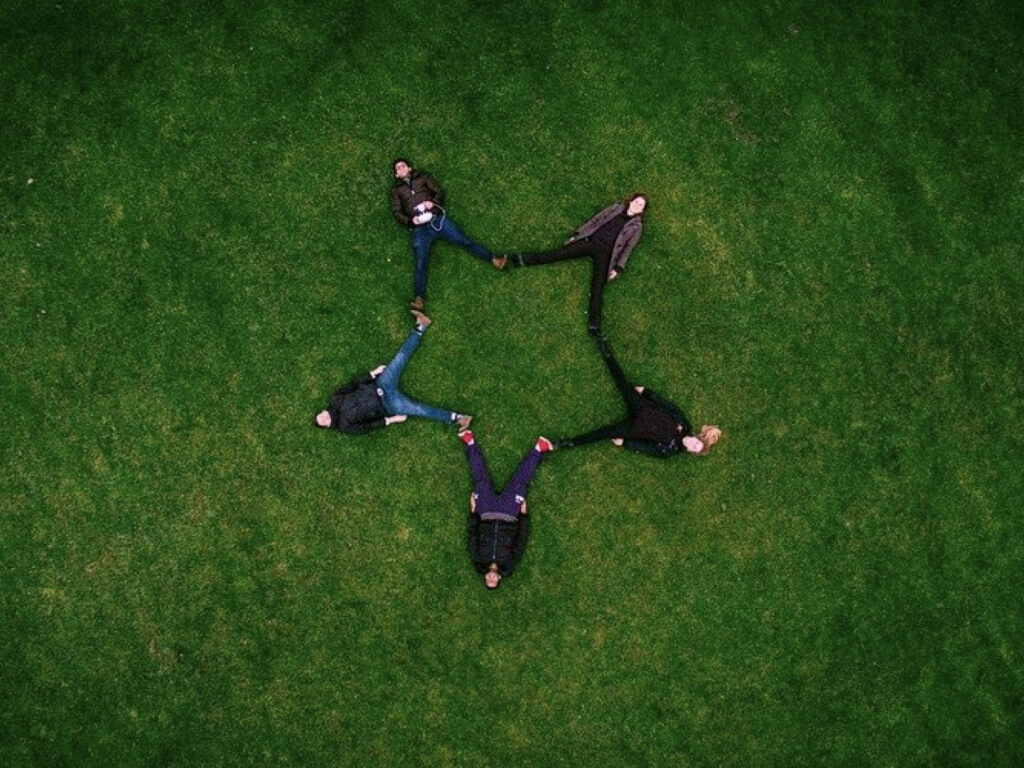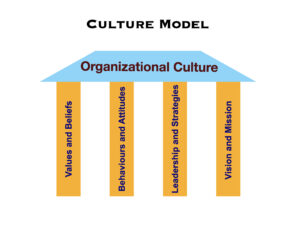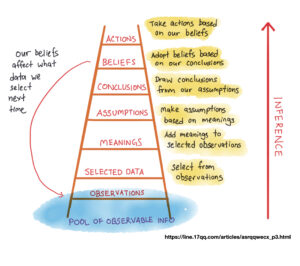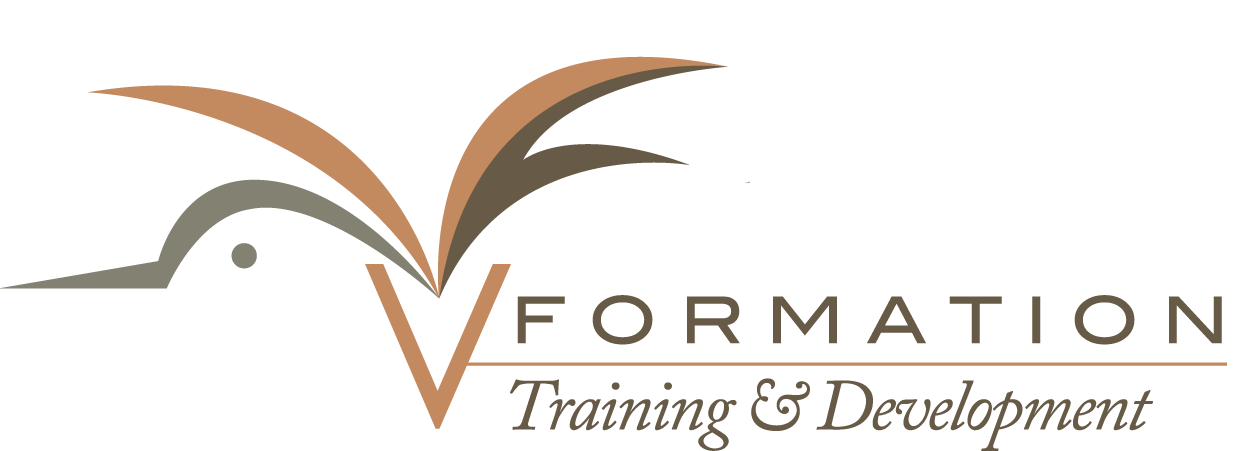
Blog
The Link Between Behaviour and Culture
By Tony Ragoonanan
I’d like to begin with a pre-Covid story but bear with me, the concepts still matter during the pandemic and they will matter long after it is over. Like many of you, every now and then, I enjoy dining out with family or friends. When I do, there’s one sports bar in particular that I enjoy going to, and the reason I go there is s imply because of the customer experience they offer (other than…I really need to get out of my house for a change). It stands out from other sports bars because of a few specific reasons. Of course, what I buy there is certainly one of them but I am omitting this detail to make this point. Regardless of who our waiter or waitress is, their colleagues always check to make sure that we are well taken care of, meeting our needs at every turn, instead of us having to do a visual search for the person who is serving us when we need something. Additionally, every time I went back there, the great experience I had was happily re-experienced and it is the reason I will go back. So my point here is this; this sports bar differentiated itself because of the awareness and consistency that its staff demonstrated.
imply because of the customer experience they offer (other than…I really need to get out of my house for a change). It stands out from other sports bars because of a few specific reasons. Of course, what I buy there is certainly one of them but I am omitting this detail to make this point. Regardless of who our waiter or waitress is, their colleagues always check to make sure that we are well taken care of, meeting our needs at every turn, instead of us having to do a visual search for the person who is serving us when we need something. Additionally, every time I went back there, the great experience I had was happily re-experienced and it is the reason I will go back. So my point here is this; this sports bar differentiated itself because of the awareness and consistency that its staff demonstrated.
The reason I share this story is to show that the way employees behave within an organization plays a major part in determining the kind of culture that exists within the organization. My example here only shows a customer experience but culture also extends to many other aspects of the organizational environment.
Organizational culture is defined as the underlying beliefs, assumptions, values, and ways of interacting that contribute to the unique social and psychological environment of an organization. Simply stated, organizational culture is “the way things are done around here.”
(Deal & Kennedy, 2000).
An important concept to note is that even though beliefs, assumptions, and values are key, they are not features that we can actually observe, therefore, the “go-to” for any solution must start with closing the gap between what we actually observe and what we want to observe, and these are behaviours.
It is certainly possible to observe behaviours when someone is doing a job, how they are doing it, and how they are interacting with others. This is what makes change or improvement possible because behaviour provides evidence.
My intent is certainly not to trivialize the importance of an individual’s underlying beliefs, assumptions, or values because they are, in fact, the “roots” of behaviours.
Additionally, behaviour must go hand in hand with the skills, knowledge, and abilities to create defined competencies and to get the job done. How these look “in action” is all about PEOPLE and it provides the PHYSICAL EVIDENCE, both essential ingredients that will add to the competitive advantage that may already be present with the other 5 P’s of marketing (Product, Price, Promotion, Place and Process).
Getting the right Behaviors will promote the right culture
Even though eventual behaviours help to drive culture, culture can also influence behaviours. Think for example of someone who is punctual by nature. They start working at an organization where employees consistently show up late. After a couple of weeks, the new employee may not see any value in reaching to work on time. It’s not that they don’t value being early, it’s just that coming to work on time may no longer serve them in this situation. This is why it is crucial to get behaviours right from within.
If for example, a group of senior leaders decides that their organizational culture needs to promote more “openness” between employees and within leader-employee relationships, but when you look at the agenda for their meetings or other activities, there’s no time devoted to discussing how they can promote “openness” within the organization. In addition to this, how much time do those leaders spend having one on one conversations with their employees? If the leaders don’t do it, no one else will.
From my experience, many organizations love to use words or phrases like “openness”, “initiative”, “customer service excellence” etc. as a representation of their organizational values or as competencies on their performance assessments, but in reality, in many corporate cultures, they are treated as though they are simply “ornaments”, great to have on paper, looks valuable, but they are not demonstrated consistently across the organization.
Edgar Schein, in his book, “Corporate Culture Survival Guide” (1st Ed), stated the following:
“We can espouse teamwork, openness of communications, empowered employees who make responsible decisions, high levels of trust, and consensus-based decision-making in flat and lean organizations until we are blue in the face. But the harsh reality is that in most corporate cultures these practices don’t exist because the cultures were built on deep assumptions of hierarchy, tight controls, managerial prerogatives, limited communication to employees, and the assumption that management and employees are basically in conflict anyway—a truth symbolized by the presence of unions, grievance procedures, the right to strike, and other artifacts that tell us what the cultural assumptions really are. These assumptions are likely to be deeply embedded and do not change just because a new management group [or even the current one] announces a new culture.”
For organizations that have had these negative structures for extended periods, any improvement can be extremely difficult to achieve.
However, the right behaviours are crucial and interact with other components to create the desired culture. Please see Figure 1:
Figure 1

Values and beliefs are components that must be shared by everyone within the organization. These guide attitudes and resulting behaviours. Leaders, through a variety of processes, must ensure that these behaviours are adhered to so that the mission and vision can be achieved. These processes include actions and frameworks that leaders use to create the right environment. This includes but is not limited to coaching, feedback, appraisals and other performance conversations that create the right environment and support employee competence.
Even though these processes are helpful, they must be done right. What could prevent them from being effective are conflicts due to the differences in beliefs, values, attitudes and eventual behaviours, many of which can be unconscious, consequently exposing the unconscious biases that we all have.
The dangers of unconscious bias when reading behaviours
“Unconscious bias (or implicit bias) is often defined as prejudice or unsupported judgments in favor of or against one thing, person, or group as compared to another, in a way that is usually considered unfair.”
– Source: https://www.vanderbilt.edu/diversity/unconscious-bias/
Unconscious bias, radically influences how we make decisions by impacting our perception of people and situations. Some forms of unconscious bias are difficult to override, even if we know it is wrong. This happens because it is deeply ingrained into our thinking. However, studies have shown that we can at least produce shifts in our behaviors.
Unconscious bias occurs because of the brain’s natural tendency to look for patterns and associations in the world. We tend to seek out patterns and when we think that something is true we look for anything that will confirm it to us. We eventually fall prey to seeing things that are not there. Eventually, we make bad decisions potentially affecting those around us. Our brain likes to take shortcuts. We tend to try to simplify the world.
Our experience and conditioning each play a role. Every time we make a decision, our social background, life experiences, and personal and cultural values influence our reasoning. Making a change means changing habits, how we think and how we think about how we think (if you could wrap your head around that). This is what makes change a challenge for many.
The following figure (Figure 2) shows the Ladder of Inference. It is a thinking process that we go through, usually without realizing it, to make sense of situations in order to act. It helps us to think about our thinking and to coordinate our thinking with others.
Figure 2
 According to the figure, we start by selecting “data” from the experiences or beliefs we have about the world, making our assumptions, explaining them to ourselves, and then drawing conclusions. This happens extremely quickly in our minds, and we are probably unaware that we may not be selecting the right “data” or only selecting some of the “data”. We create beliefs about people or situations and use these beliefs to make judgments about new experiences. The truth is that no one else sees our thought processes, or knows what stages we have gone through to reach our conclusions. All that they see is the action we take as a result. This is the essence of unconscious bias.
According to the figure, we start by selecting “data” from the experiences or beliefs we have about the world, making our assumptions, explaining them to ourselves, and then drawing conclusions. This happens extremely quickly in our minds, and we are probably unaware that we may not be selecting the right “data” or only selecting some of the “data”. We create beliefs about people or situations and use these beliefs to make judgments about new experiences. The truth is that no one else sees our thought processes, or knows what stages we have gone through to reach our conclusions. All that they see is the action we take as a result. This is the essence of unconscious bias.
There are many types of unconscious bias and here are just some of the categories (with examples) that they will fall into:
Anchoring bias
Being overly influenced by the first piece of information we receive. For example, we may hear something about someone on the team from a colleague that may or may not be true and tend to believe it. In some cases, it may be because of the relationship we have with the person who told us.
Confirmation bias
Placing more value on information that supports our existing beliefs. This leads us to reject any information that opposes our beliefs. For example, if employees are now working from home due to Covid, as a leader, you may automatically feel they are not working.
Conformity Bias
Conformity bias is the tendency people have to act similarly to the people around them regardless of their own beliefs or idiosyncrasies — also known as peer pressure. For example, we may tend to go along with a decision or behaviour because the rest of the team agrees with it or is demonstrating it.
Affinity Bias
Affinity bias occurs when you unconsciously prefer someone because they remind you of yourself or people you know and like. For example, we may show unconscious favoritism to someone who reminds us of a good friend.
Biases exist and can hurt the organizational environment, in that, any feeling of fairness by employees could be drastically affected and have a disastrous effect on levels of trust, overall relationships, and results.
Getting it Right: The role of leaders
Linking behaviour and desired culture must start with leadership and the environment they create. Addressing biases will have a major impact on levels of trust and productivity. Here are 5 ways to ensure that this can happen:
- Become more aware of your thinking and reasoning. Recognize how your experiences may have shaped your attitudes and beliefs.
- Think about how your actions and the environment you created may have impacted others. Get feedback on how you “show up” to others.
- Make sure that others understand your thinking and reasoning through conversations. Get feedback to create clarity.
- Ask questions to others about what they are thinking, and test your assumptions. Recognize how their experiences may have shaped their attitudes and beliefs.
- Structure your design making. Define criteria and specifications with tasks. For example, if you are delegating a task, be clear on expectations such as deadlines, structure, roles and responsibilities. Don’t assume that the person or team knows what you are talking about.
By leaders clearly communicating expectations, listening for clarification, and observing how they are behaving, better decisions can be made by all involved. This happens because the environment created can, in turn, develop the behaviours of employees, increase the levels of accountability and create the right organizational culture.
How aspects of culture impact the competitive advantage
In a November 2015 study, “How Corporate Culture Affects the Bottom Line,” by Duke University’s Fuqua School of Business, executives indicate that corporate culture drives profitability, acquisition decisions and even whether e mployees behave in ethical ways.
mployees behave in ethical ways.
Among the findings of the study:
- More than 90% said that culture was important at their firms.
- 92% said they believed improving their firm’s corporate culture would improve the value of the company.
- More than 50% said corporate culture influences productivity, creativity, profitability, firm value and growth rates.
- Only 15% said their firm’s corporate culture was where it needed to be.
All of these findings show that there is certainly a desire to get culture right and as my brief initial story shows, organizations in any industry can differentiate themselves not only because of what they do but because of how they do it. There can be great strategies in place, but if the right behaviours and supporting systems are not, the culture of the organization will defeat the strategy.
Having the right culture will ensure that higher levels of motivation exist among both leaders and their direct reports exist in the workplace. Motivation impacts “how” things are done as it impacts skills, knowledge, abilities, attitudes, and resulting behaviours. These, in turn, help to create long-term value creation, a better overall customer experience, and a clear and distinct competitive advantage.
In summary
Culture matters and whether it is negative or positive, it rules your organization. It is heavily linked to the behaviours demonstrated. It is also important to note that culture is not an HR responsibility, it is part of organizational strategy and therefore dependent on everyone playing their part and feeling that they are a part of things.
Tony  Ragoonanan is the Founder of V-Formation Training & Development. As a Trainer and Performance Management Specialist, he helps individuals, teams, and businesses to align behaviours and goals, create the right organizational culture and maximize capability. Outside of this, it’s all about family, football, and fitness!!
Ragoonanan is the Founder of V-Formation Training & Development. As a Trainer and Performance Management Specialist, he helps individuals, teams, and businesses to align behaviours and goals, create the right organizational culture and maximize capability. Outside of this, it’s all about family, football, and fitness!!
868-681-3492 | tonyr0909@gmail.com




Leave a reply